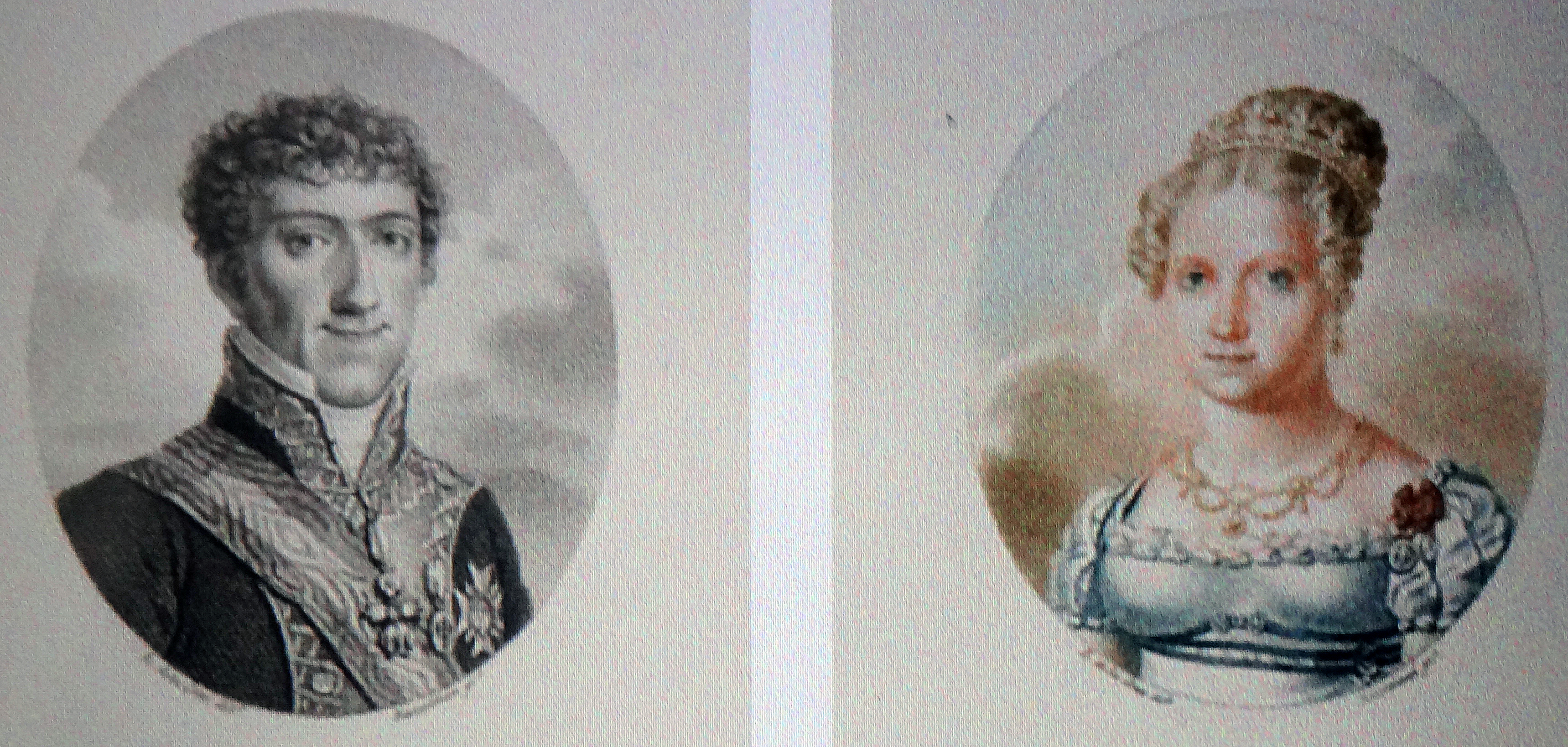Francisco de Asís era il terzo di undici figli nati dai suoi genitori. Francisco de Asís era stato preceduto da due fratelli: l'Infante Francisco de Asís (1820-1821) e l'Infanta Isabel (1821-1897). Francisco de Paula e Luisa Carlotta ebbero altri otto figli dopo la nascita del loro secondo figlio. Questi bambini erano: Infante Enrique (1823-1870), Infanta Luisa (1824-1900), Infante Duarte Felipe (1826-1830), Infanta Josefina (1827-1910), Infanta Teresa (1828-1829), Infante Fernando (1832- 1854), Infanta Maria Cristina (1833-1902), e Infanta Amalia (1834-1905). Come suo fratello maggiore, morto da bambino, Francisco de Asís prese il nome da San Francesco d'Assisi.
 |
| Una medaglia per commemorare il matrimonio della regina Isabella II di Spagna e dell'Infante Francisco di Spagna |
On 10 October 1846 (the sixteenth birthday of the Queen), Infante Francisco de Asís of Spain was married at Madrid to Queen Isabel II of Spain, the first daughter of King Ferdinando VII and Queen Maria Cristina of Spain (née Two Sicilies). Francisco and Isabel were double first cousins: both were grandchildren of King Carlos IV and Queen Maria Luisa of Spain (née Bourbon-Parma) as well as grandchildren of King Francesco I and Queen Maria Isabella of the Two Sicilies (née Spain). It was well-known that the couple were ill-suited from the beginning: Isabel was a man-eater and Francisco de Asís was not manly. In Madrid, famous for cutting sobriquets, Francisco de Asís was known as “Paquita,” a diminutive of “Francisca.” Spanish historians have argued that the bride was more interested in marrying her groom’s bother, Infante Enrique, a virile, swashbuckling young man who seemed better suited to the wedding bed than his older bother. Reluctantly, Queen Isabel II and Infante Francisco de Asís entered into holy matrimony in a joint wedding ceremony alongside the queen’s sister Infanta Luisa Fernanda (1832-1897) and Prince Antoine d’Orléans, Duke of Montpensier (1824-1890), the son of King Louis Philippe and Queen Marie-Amélie of the French. There had been much international debate about which royal prince should be wed to which of the two sisters. Queen Isabel certainly drew the shorter straw when she wound up with her effete cousin Francisco, while Infanta Luisa was considered far more lucky in getting the Duke of Montpensier. The French monarch’s hope centered on Francisco de Asís being unable to procreate any children, thus the crown passing to the offspring of Montpensier and Luisa Fernanda. Queen Isabel’s prodigous sexual appetite, which she satisfied by welcoming countless men to her bed chamber, ensured her one would retain the Spanish throne.
 |
| King Consort Francisco de Asís of Spain |
During the course of the union of Queen Isabel II and King Consort Francisco de Asís, she gave birth countless times. Very few of her children shared the same father. However, of Queen Isabel II’s many offspring, only five children reached adulthood. The first to arrive was Infanta Isabel (1851-1931), who married her mother’s and father’s first cousin Prince Gaetan of the Two Sicilies, Count of Girgenti. Infanta Isabel, quite possibly a lesbian, became a widow at a young age due to her husband’s suicide. She never remarried, but her Madrid palace witnessed a long line of lady companions. Next to appear was the only surviving son, the future King Alfonso XII of Spain (1857-1885), who went on to marry twice. His first wife was Infanta María de las Mercedes, one of the many children of Montpensier and Luisa Fernanda. However, the beloved queen died of tuberculosis just months after their wedding. Alfonso XII’s second wife was Archduchess Maria Christina of Austria (1858-1929), who served as regent during the childhood of the king’s posthumous son, Alfonso XIII. The third child and second daughter, Infanta María del Pilar (1861-1879), came next; she was considered as a bride for the Prince Imperial, son of Emperor Napoléon III and Empress Eugénie of the French. The fourth child and third daughter, Infanta María de la Paz (1862–1946), then made her appearance; Paz married her first cousin Prince Ludwig Ferdinand of Bavaria (1859-1949), son of Infanta Amalia (a sister of Francisco de Asís) and Prince Adalbert, youngest son of King Ludwig I and Queen Theresa of Bavaria. Finally, and lastly, Infanta Eulalia (1864-1958) arrived and completed the family unit; Eulalia wed her cousin Infante Antonio, Duke of Galliera (1866-1930). Theirs was a disastrous marriage that caused the royal family much angst. Their two sons, Alfonso and Luis Fernando, suffered greatly by the marital turmoil of their parents. Alfonso, known as “Ali” within the family circle, made a splendid marriage to Princess Beatrice of Edinburgh, a granddaughter of Queen Victoria. As for Luis Fernando, he was a walking mess…well-known for his homosexual escapades, and alcohol and drug-induced debauchery, he eventually went through his fortune. Left with few options, he married Princess Marie de Broglie (née Say), a wealthy widow whose fortune Luis Fernando dealt a death blow to.
 |
| Infanta Isabel of Spain and Prince Gaetan of the Two Sicilies |
 |
| King Alfonso XII and Queen Maria Cristina of Spain (née Austria) |
 |
| Infanta Pilar of Spain |
 |
| Infanta Paz of Spain and Prince Ludwig Ferdinand of Bavaria |
 |
| Infanta Eulalia of Spain, Duchess of Galliera |
Nel 1833, Isabel II divenne regina di Spagna all'età di tre anni dopo la morte del padre. Nel 1868, dopo trentacinque anni sul trono, Isabel II abdicò in seguito alla Gloriosa Rivoluzione. La regina, il re consorte e i figli reali partirono per l'esilio in Francia. Nel 1870, Isabel e Francisco si separarono in termini amichevoli. L'unico figlio sopravvissuto, Alfonso XII, regnò come re di Spagna dal 1874 fino alla sua prematura morte nel 1885.










.jpg)





Nessun commento:
Posta un commento